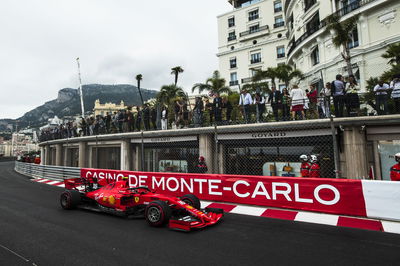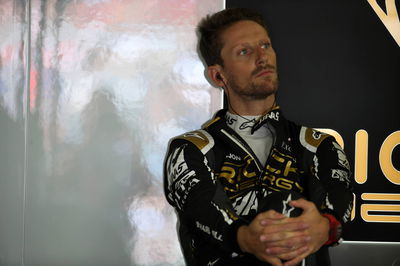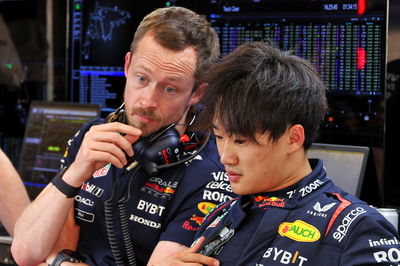Qualifying Analysis: How did Ferrari get it so wrong?
We’ve not even had the race in Monaco yet, and we’re already asking ourselves just how Ferrari has scored yet another own goal in its fight against Mercedes in Formula 1 this year.
While its chances of scoring pole position may have been slim given Lewis Hamilton and Valtteri Bottas’ ultimate pace in qualifying, Ferrari killed off any hopes with the latest in a growing sequence of operational errors made this year.
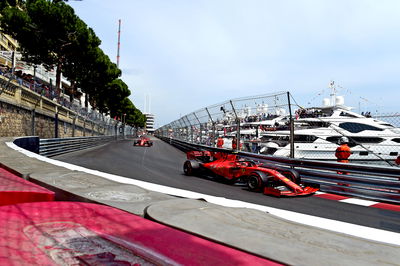
We’ve not even had the race in Monaco yet, and we’re already asking ourselves just how Ferrari has scored yet another own goal in its fight against Mercedes in Formula 1 this year.
While its chances of scoring pole position may have been slim given Lewis Hamilton and Valtteri Bottas’ ultimate pace in qualifying, Ferrari killed off any hopes with the latest in a growing sequence of operational errors made this year.
The decision to keep Charles Leclerc in the pits through the closing stages of Q1 backfired dramatically when a flurry of improvements by his rivals shuffled the youngster down the order, into the dropzone and out of qualifying.
The home favourite, the poster boy for the Monaco weekend would be starting 16th on Sunday.
Ferrari’s explanation for the decision to keep him in was that it wanted to take a risk – apparently necessary given the gap to Mercedes that has already opened up this year – and try to save an additional set of Soft compound tyres.
But it’s hard to see what Leclerc would have gained from it. An extra set of Softs for Sunday would have been handy, but as we saw in Spain under the late Safety Car, it doesn’t offer a massive advantage compared to those on three-lap-old tyres that have completed a single qualifying run. Especially in Monaco, where overtaking is a near-impossible task anyway, would it have done Leclerc a huge amount of good?
There were early warning signs for Ferrari on Leclerc’s first run in Q1, though. On a single set of Soft tyres, he set an initial benchmark – 1m12.825s – before completing a cool-down lap, after which he then put in his best time of the session (1m12.149s). Ferrari kept him out for a third cool/push sequence, resulting in a time 0.3 seconds slower, before he came into the pits.
The very fact that Leclerc had found so much time on his second push lap on the same set of tyres should have been enough warning that big improvements could be made throughout the field. In the end, 0.8 seconds covered the top 17 drivers in Q1 – so the fine margins meant that any improvement could be costly.
Ferrari chief Mattia Binotto explained after qualifying that the team had trusted in its data and tracking of the other cars in the session, prompting it not to send Leclerc out again. Leclerc himself had asked the team if it was sure he should not go out again, only to be told it was not necessary. Binotto did not overrule this call.
In fairness to Ferrari, Leclerc did sit sixth at the time they made the decision, meaning 10 drivers had to improve their laps to knock him out. But exactly 10 drivers did, with the final blow being dealt by Leclerc’s teammate, Sebastian Vettel, who himself was fortunate to make it through to Q2.
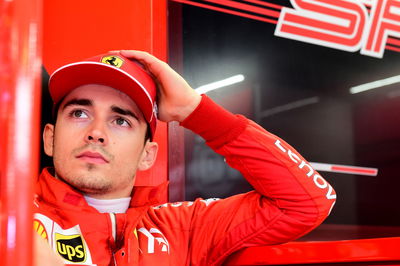
Vettel was fuelled for a long opening run in Q1, but struggled to get in a quick lap until late in the stint. His best time of 1m12.335s left him at risk of dropping out, with his push to try and get through causing him to make a mistake exiting Swimming Pool, scraping the wall and forcing him to pit.
Vettel came in for a fresh set of tyres and put in a last-gasp effort to go fastest of all, knocking his teammate out in the process.
Binotto stressed after qualifying that it had not been a case of Ferrari taking its eye of the ball with Leclerc as it shifted focus to Leclerc, though.
“We’ve got two full teams, one per driver, so we didn’t compromise at all,” Binotto said. “The [cut-off] threshold was the same exactly for the two drivers.”
Just as we saw in Baku, though, the demise of Leclerc scuppered Ferrari’s hopes of scoring pole position.
Vettel was able to get through Q2, but could not match either Mercedes or Red Bull’s Max Verstappen’s time in Q3, finishing almost eight-tenths of a second off the pole time – losing time on his final run after making another mistake, clipping the wall at Tabac. Leclerc was the only driver all weekend to beat Hamilton in a session, edging the Briton in FP3 – but he was denied the chance to do so when it really mattered.
Binotto said he saw no reason for any major changes to take place in response to this latest setback when asked if any procedures or personnel needed changing.
“I think we’ve got the right people. I think we’ve got the right procedures,” he said. “But we need to improve our tools. And I think we are at least open to new opportunities of looking at what we did and how we may do that differently in the future. That is something we will address from the next race onwards, no doubt.”
But as Ferrari tries to learn from this error, the gap to Mercedes at the top of both championships is only growing bigger and bigger by the day. If Hamilton and Vettel finish where they start tomorrow, the gap between them would be at 61 points after just six races.
The fact Ferrari saw this – the most important qualifying of the year, where you would surely play it safe – as a time to take risks shows where the team is at right now.
It’s panicking. And it needs to find its feet immediately if it is to stand any chance of closing the gap to Mercedes this year.
